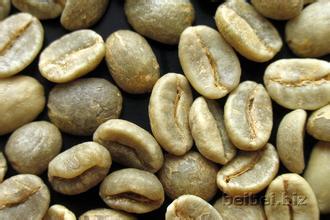Do raw coffee beans really need to be washed? Do raw coffee beans need to be cleaned? Wash coffee and raw beans
The peeled coffee beans are bagged and transported everywhere, which may not be very clean indeed, and some monks even have water or mud stains on their surfaces.
If you carefully examine the microbes on the surface of raw beans that are invisible to the naked eye, you will find that there are about 10,000 bacteria on every gram of raw coffee beans.
However, this does not mean that raw coffee beans must be washed, because after baking, most of the dust will fall off, and the high temperature during baking can kill almost all microbes.

On the contrary, the washed raw coffee beans have two points to pay attention to. First, be careful not to soak for too long. If you soak in water for too long, many ingredients that make up the flavor of coffee will be lost; second, pay attention to moderate drying. If the drying time is too long, it is easy to breed mold. If the drying time is too short, there will be uneven drying, resulting in uneven baking. If cleaning is necessary, then I suggest washing quickly, drying moderately, and then using up the raw beans as soon as possible.
On the other hand, I have a paradoxical idea that those who sell coffee will realize that raw coffee beans are not clean. Why would you think that? Because the hygienic requirements of raw coffee beans, the sacks that pack them and roasted coffee beans are not the same. Placing roasted coffee beans next to the sacks of raw coffee beans or leaving the sacks of raw coffee beans open are common phenomena in family bakeries. Although you don't need to make the coffee beans as clean and beautiful as the exhibits, you should at least know that it is not hygienic.
In the industry, few people can treat coffee as "food"-what kind of food industry will grab what guests import with their hands? Would put food and unsanitary things together? This is a problem of consciousness, which will bring harm to everyone. The dust on raw beans or gunny bags can easily induce allergies and cause erythema on people with allergic constitution. Therefore, I think that in order to make consumers feel at ease to eat coffee, every coffee practitioner should raise the hygiene awareness of coffee beans.
The article is excerpted from "you don't know Coffee". Shiweizhi is widely edited and sorted out by Coffee Workshop. Please indicate if you reprint it.
Important Notice :
前街咖啡 FrontStreet Coffee has moved to new addredd:
FrontStreet Coffee Address: 315,Donghua East Road,GuangZhou
Tel:020 38364473
- Prev

Introduction to the Variety characteristics of Typica Coffee beans the flavor and taste characteristics of Tieka coffee
Typica Tiebika is the species name of coffee beans and is one of the oldest of many Arabica species. Iron pickup, also known as the old variety of small-grain coffee, its yield is less, cultivation is difficult, so the price is much higher than ordinary small-grain coffee. Tibica coffee is originally from Egypt.
- Next

To boutique coffee beginners how to drink individual coffee how to appreciate boutique coffee
Why can't I taste so much fruit (chocolate, nuts, cream)? I often see coffee beginners post similar questions. For example, why can't drink citrus flavor, why can't drink nutty flavor, chocolate flavor and so on. As a result, some coffee diners will lose confidence in coffee, come to the conclusion that coffee is very bad, and shut it out from
Related
- Beginners will see the "Coffee pull flower" guide!
- What is the difference between ice blog purified milk and ordinary milk coffee?
- Why is the Philippines the largest producer of crops in Liberia?
- For coffee extraction, should the fine powder be retained?
- How does extracted espresso fill pressed powder? How much strength does it take to press the powder?
- How to make jasmine cold extract coffee? Is the jasmine + latte good?
- Will this little toy really make the coffee taste better? How does Lily Drip affect coffee extraction?
- Will the action of slapping the filter cup also affect coffee extraction?
- What's the difference between powder-to-water ratio and powder-to-liquid ratio?
- What is the Ethiopian local species? What does it have to do with Heirloom native species?

